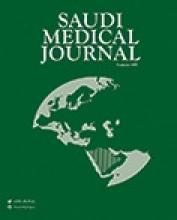Abstract
OBJECTIVES: To assess the effectiveness of Ankaferd blood stopper (ABS) in the topical control of bleeding due to cutaneous/subcutaneous incisions.
METHODS: We included in this study, 69 patients with cancer that were admitted for port insertion to the Emergency Department of Gaziantep University Hospital, Gaziantep, Turkey, between May and July 2008. We used the wet compress form of ABS in 37 patients (group I), and regular dry sterile sponges in 32 patients (group II), to stop the bleeding that occurs during the clinically indicated vascular port insertion in patients with cancer. The success rate in terms of bleeding control, time needed to stop the bleeding, recurrence of bleeding, and complications were recorded.
RESULTS: A total of 69 patients were included in this study. The average time needed to stop the bleeding was 32.97 ± 29.9 seconds for group I, and 123.75 ± 47.5 seconds for group II. Bleeding restarted in 24% in group I, and in 50% in group II. Among the patients in group I, 13.5% developed localized redness, and 8.1% minor swelling, while 8.1% reported local pain at the wound site; in 5.4% of the patients, the sutures at the wound site opened. The same parameters were recorded for group II; 9.4% for localized redness, 0.0% for minor swelling, 6.2% reported local pain, and the sutures at the wound site opened in 3.2% (p=0.592).
CONCLUSIONS: The Ankaferd blood stopper was proven to stop local bleeding in a shorter time, with a lower recurrence rate in comparison with the sterile sponge.
- Copyright: © Saudi Medical Journal
This is an open-access article distributed under the terms of the Creative Commons Attribution-Noncommercial-Share Alike 3.0 Unported, which permits unrestricted use, distribution, and reproduction in any medium, provided the original work is properly cited.






